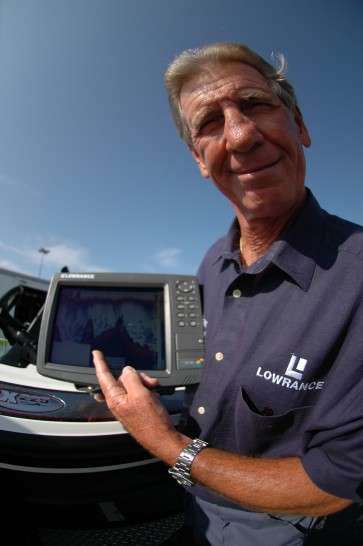
Editor’s note: This is the fifth of a series by Wilson Frazier covering every aspect of how to use, and get more out of, your electronics. Frazier is one of the leading experts in the industry on the setup and use of electronics. For more information, visit his website.
Part 5: What GPS shows you
We’re going to start this lesson with a reminder that we covered Basic GPS in Lesson 2. If you don’t remember what we talked about in that lesson I suggest you reread it before you go any farther.
I’m not going to tell you which buttons to push to accomplish what’s in this lesson. There are too many manufacturers and unit designs to cover them all. Read your manual, and practice.
Most of the time anglers use their GPS to mark fishing spots. That’s fine, but for those times when you’re using it to navigate I want to suggest something and warn you about something.
Learn to read your Map screen in the North Up orientation. This will give you a fixed point of reference when you navigate.
Move your boat by following compass headings. It might be a little confusing at first, especially if you’ve never done it before, but in the long run it’ll make more sense. Professional navigators almost always view their screens this way. If you get confused, you can always temporarily orient your map so that the direction you’re heading is in front of you, at the top of the screen.
Next, I want to warn you that your boat electronics aren’t the same as your automobile GPS. If you plot a course from one point to another, the GPS will mark a straight line between those points regardless of what’s in your way — land, bluff wall or shallow water.
Also, don’t allow your trails to end up looking like someone threw spaghetti on your screen. Delete those you don’t need. Start a new trail every time you go fishing or boating. Change colors from one day to the next so that you know what you’re looking at. Let the display help you, not confuse you.
OK, now let’s talk about accurately marking spots.
The only way you can mark a spot with perfect accuracy is if your boat is sitting perfectly still, the spot you’re marking is directly under your transducer and your GPS antenna is directly over your sonar transducer.
If there’s any distance between the two there will be some error built into your waypoint. Your GPS is marking from the antenna. Your sonar is showing you something under the transducer.
To correct for this you need to know how far your antenna is from your transducer — that’s why I like stand-alone antennas installed directly over the transducer, or reasonably close to it, instead of those built into the unit itself — and you must understand boat movement.
One way to get a sense of boat movement is to grab three marker buoys and run your boat at idle. Drop one when you first see something on your sonar screen. Drop another when it’s in the middle of the screen. Drop the third as it exits the screen on the left-hand side. Keep in mind that these distances will change depending upon your zoom rate.
You’ll probably notice that your boat travels farther than you think. At 3 mph (a typical idle speed) your boat will move 4.4 feet in one second. Wait a few seconds before you mark your waypoint and you’ll be so far away from it that it’s useless.
It’s impossible to accurately mark waypoints without understanding these concepts and compensating for them. My instructional DVD set has a complete set of exercises — much more detailed than what you’re reading about here — that you can do with marker buoys to teach yourself exactly how to mark spots accurately, and how to easily get back to them.
Pro Angler Tip: Elite Series pro, Charlie Hartley, frequently uses marker buoys when he wants to mark a small spot.
“I use my electronics over 250 days a year. I know how to correctly mark a spot. But, I still find it useful to mark my place with a buoy after I find it. It’s easier for me to cast to a visual target, or get back to it, especially if I drift or wander off somewhere. Besides, I can think about fishing instead of watching my screen all the time.”
More in this series: Basic sonar | Basic GPS | Tweaking your unit | What sonar shows you





